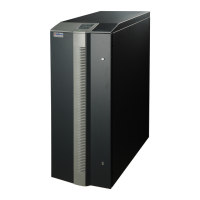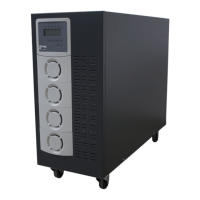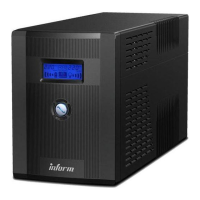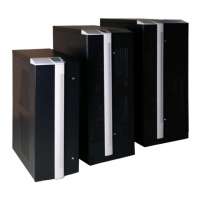What does PSP FAILURE1 mean on my inform DSP?
- SSusan PeckSep 10, 2025
If the inform UPS displays 'PSP FAILURE1', it means that the Control Power supply is faulty.
What does PSP FAILURE1 mean on my inform DSP?
If the inform UPS displays 'PSP FAILURE1', it means that the Control Power supply is faulty.
What to do if my inform DSP shows an OVERLOAD message?
If the inform UPS displays 'OVERLOAD', it means you should check the loads connected to the UPS output.
What to do if I see a LINE FAILURE on my inform DSP UPS?
If your inform UPS is experiencing a 'LINE FAILURE', the mains may be off. Check all three input phases and UPS input fuses.
What does P.FAILURE 21 mean on my inform DSP?
If the inform UPS displays 'P.FAILURE 21', Parallel controller board failure.
What does BATT AUT END mean on my inform DSP UPS?
The message 'BATT AUT END' on your inform UPS occurs only at the end of a battery operation during line failure.
What does OUTPUT HIGH mean on my inform DSP UPS?
If the inform UPS displays 'OUTPUT HIGH', it means that there is an inverter failure.
What does RS485 ALARM mean on my inform DSP?
If the inform UPS displays 'RS485 ALARM', there is an interruption or false status in parallel communication.
What does ONLY ONLINE mean on my inform UPS?
If the inform UPS displays 'ONLY ONLINE', there is an online UPS in parallel system, please change the operation mode.
What does P FAILURE 23 mean on my inform UPS?
If the inform UPS displays 'P FAILURE 23', Parallel controller board failure.
What does P.SYNC. ALARM mean on my inform UPS?
If the inform UPS displays 'P.SYNC. ALARM', in parallel system SLAVE UPS is not synchronized to MASTER UPS.
Provides essential safety information and precautions regarding the UPS batteries.
Details electrical and physical characteristics of the PDSP series UPS models.
Instructions for connecting the main power cables to the UPS unit.
Instructions for establishing a proper safety earth connection for the UPS.
Step-by-step guide for connecting power cables to the UPS terminals.
Detailed procedure for installing and connecting UPS battery modules.
Details alarms, causes, and troubleshooting steps for UPS faults.
Describes available modes for parallel UPS operation: Parallel, Redundant, N+1.
Details the 'PARALLEL' mode for increasing power capacity with load sharing.
Explains the 'REDUNDANT' mode for increased reliability with equal load sharing.
Describes the 'N+1 REDUNDANT' mode for enhanced reliability with spare capacity.
Provides a systematic approach to identifying and resolving UPS faults.



